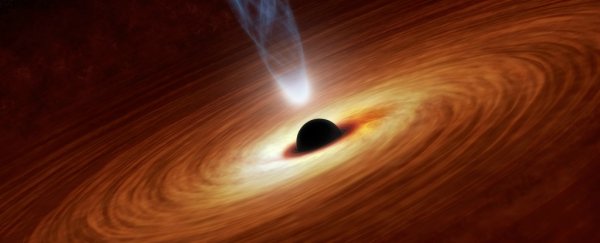
With so much out there about black holes, it seems like we have a pretty good idea of what they look like, right? Nope. Despite all the attention, no one has ever photographed a black hole (though we may get a chance to next year), which means every image you've ever seen of one was an illustration.
According to the Vox video above, black holes are ridiculously hard to photograph because they're either super far away from us or way too small. Also, black holes notoriously absorb all light, which makes it kind of hard to capture them on film.
This all leads to a logical question: if we can't see them, how do we know they're real? This has actually been a problem for researchers for a long time now. In fact, some still don't think black holes exist.
The ones that do point to how black holes affect other objects around them. For example, the stars near the centre of the Milky Way galaxy move in a weird, orbital pattern that researchers say indicates the existence of an extremely massive object (aka black hole).
Another way for researchers to find black holes is to look for the glowing dust that formed along the event horizon. Black holes can also create huge jets of debris as they suck in objects around them.
The problem is a lot of these ejected particles are only made visible with special cameras that look for infrared or radio waves. The naked eye cannot see them in the night sky, though they are right in front of us.
Next year, Vox reports, researchers will attempt to snap the very first true picture of a black hole by using the Event Horizon Telescope, which is actually a whole series of radio telescopes positioned all over the world, to gaze into the centre of our galaxy.
Check out the video above to learn about the plan in greater detail, and while you're at it, get to know another black hole conundrum: what happens to all the stuff that gets sucked into a black hole when a black hole dies?

